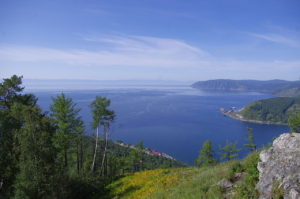World’s Most Unusual Lake Challenges Evolution
1 Peter 4:19
“Wherefore let them that suffer according to the will of God commit the keeping of their souls to him in well doing, as unto a faithful Creator..”
 Siberia’s Lake Baikal provides many mysteries for those who believe that naturalistic evolution can account for today’s biological world. Many of the unique plants and animals that call this fresh water lake home are similar to those found only hundreds of miles away in marine environments.
Siberia’s Lake Baikal provides many mysteries for those who believe that naturalistic evolution can account for today’s biological world. Many of the unique plants and animals that call this fresh water lake home are similar to those found only hundreds of miles away in marine environments.
Lake Baikal is the deepest lake in the world – 5,371 feet deep at its deepest point. Located in central Siberia, the lake has a huge variety of life. It boasts 1,550 varieties of animals and 1,085 varieties of plants. Of these, over 1,000 species are found nowhere else on earth. Seals are among the animals you would not expect to find in a freshwater environment nearly 500 miles from the sea. Lake Baikal also supports other sea creatures you would not expect to find in a freshwater lake. Hydrothermal vents were recently discovered in the depths of the north end of the lake. These are the only known hydrothermal vents in any freshwater lake. Like their marine cousins, these vents support a rich variety of sponges, transparent shrimp, bacterial mats and fish. Again, some of these creatures are found nowhere else on earth.
The questions posed by the plants and animals of Lake Baikal are troublesome for evolutionists. How did so many marine species successfully evolve to thrive in fresh water? Why are so many of these unique to a lake that is so much like an inland ocean? Did evolution know that Lake Baikal was the most ocean-like lake in the world? The plants and animals are better accounted for by the creative powers of the Creator of all that exists. Author: Paul A. Bartz
Prayer: Dear Father, help me to trust Your creative wisdom in my life. Amen.
Notes: Science Frontiers, p. 133, “Baikal’s Deep Secrets.” Photo: Lake Baikal. Courtesy of Wozny. (CC BY-SA 3.0)